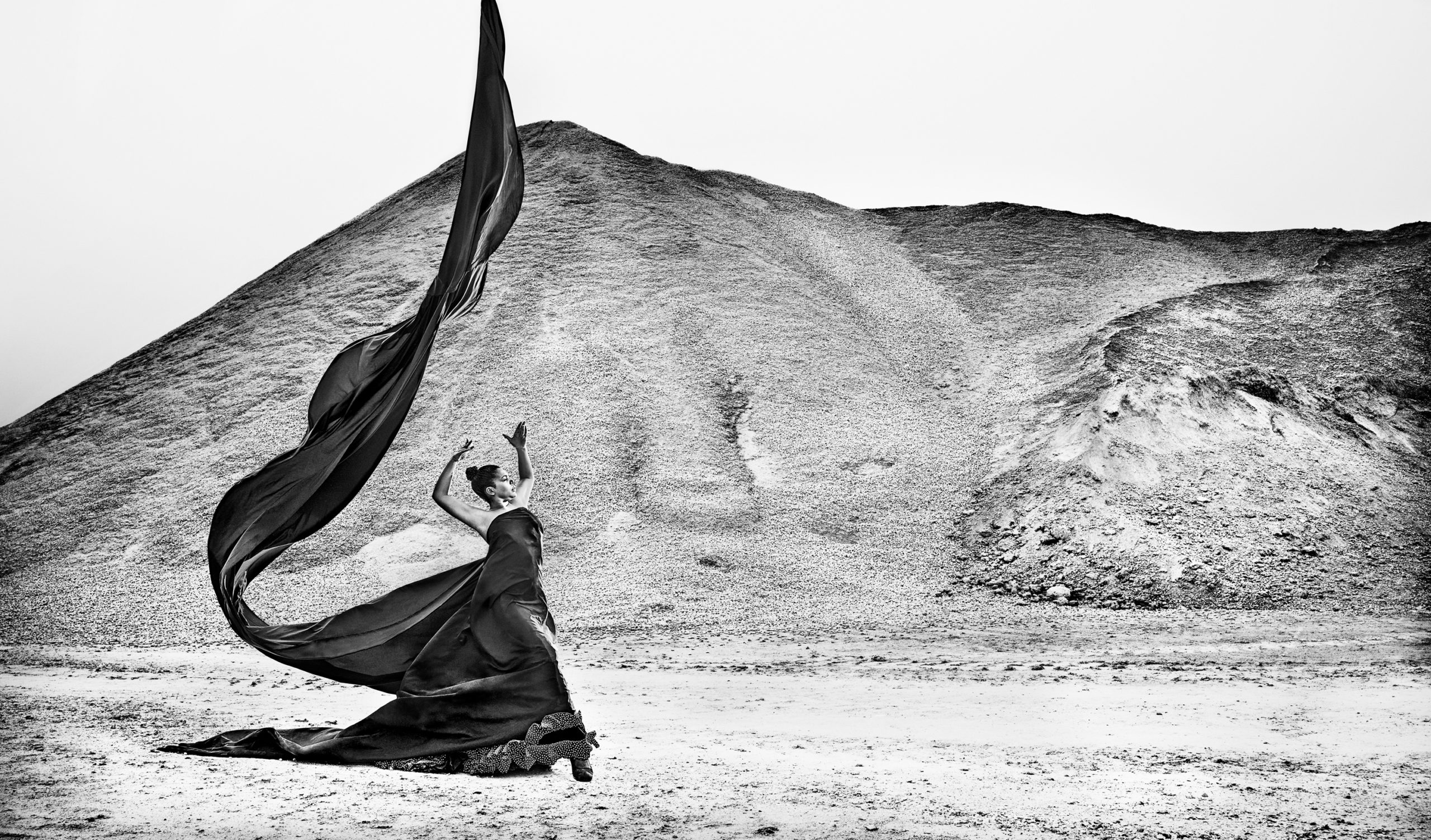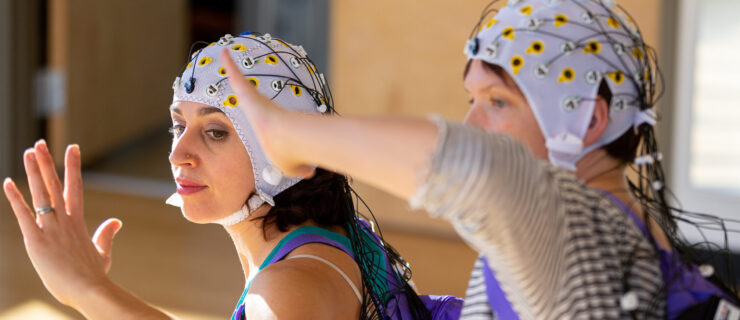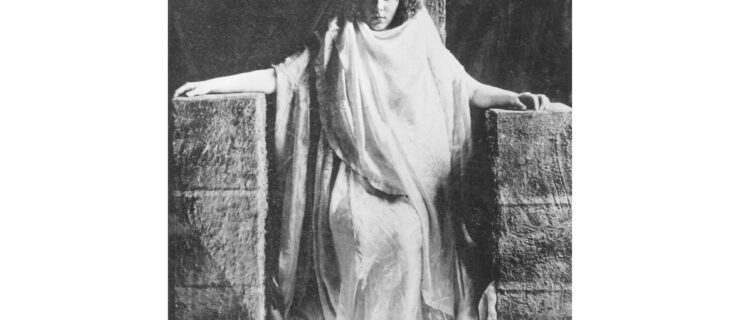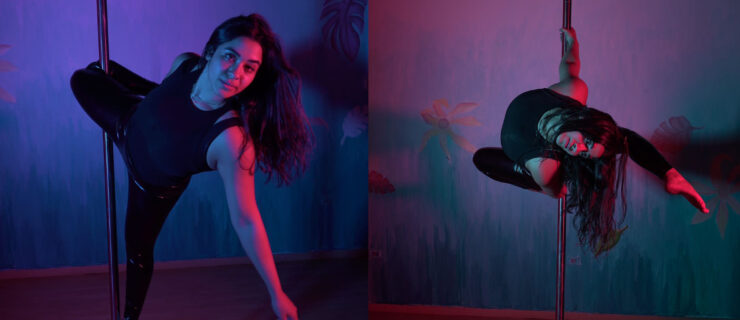Decolonizing Flamenco Through Exploring Black Influences
What images come to mind on hearing the word “flamenco”? Feet hammering floor; intense gaze; arched spine; proud, almost arrogant posture; fiery performers? Perhaps all the above, but Black bodies probably don’t figure into the picture. Yet African-descended artists are reaching out and embracing flamenco as their own.
“Decolonizing flamenco” is a label used to describe this movement. K. Meira Goldberg’s 2019 book Sonidos Negros—On the Blackness of Flamenco and Miguel Ángel Rosales’ 2016 film Gurumbé: Afro-Andalusian Memories help us understand the deep, sub–Saharan African roots in Spain’s and Portugal’s history and culture. Frequently, flamenco is described as a melding of Roma, Arab, Jewish and Iberian elements; the Black African imprint is rarely credited, although it is indelibly stamped on these Mediterranean nations that sit near the African continent and were major colonizers in the African slave trade. Between the 16th and 19th centuries, up to 10 percent of the Spanish population was Black. Many of the enslaved were retained by their captors and over generations assimilated and contributed to the culture.
Today, a cadre of Black artists, including Phyllis Akinyi, Aliesha Bryan and Yinka Esi Graves, personify why, dancewise, flamenco is their native language. In leaning into this genre, they are tapping into their cultural roots and embodying a sea change in the art form, one that is more a calling than a trend. All have trained in Spain with esteemed maestras. Launching their unique international careers, they utilize flamenco as the basis for traditional and experimental work. Like the impasse facing Black ballerinas, they are on a path posted with “no trespassing” signs. Yet, they persist.
Phyllis Akinyi
Raised in Copenhagen by Danish Kenyan parents, Phyllis Akinyi describes flamenco as “a melting pot of outcast cultures.” Trained in college as an anthropologist, she now lives in Madrid and performs internationally while pursuing a graduate degree in flamencology at Barcelona’s Conservatory of Music. Calling flamenco “divine intervention,” she turned to this form for rehabilitation in 2003 following an injury dancing hip hop for a concert in Denmark. With a laugh, she explains: “When I discovered flamenco and the variety of emotions that I’m allowed to have while dancing, that changed my life, because it was a home—a home I didn’t know that I didn’t have, and a home I didn’t know that I could have!” Anthropology studies and Kenyan ancestry help her probe Africanisms in flamenco—its polyrhythms, ancestral respect, movement sense and use of the counterclockwise circle.
“I didn’t choose flamenco. Flamenco chose me. I’ve several times tried to leave it, because it’s such a frustrating love of mine, but it keeps calling me back, and I think the duende, the indescribable part of flamenco that is so necessary, is what keeps calling me in. There’s something extremely spiritual to flamenco, in a way of using your body as a vessel (whether you are the dancer, singer or guitarist). To me flamenco is a feeling, a philosophy of life, not a skin color.”
Phyllis Akinyi
Yinka Esi Graves
Afro-British Yinka Esi Graves grew up in London, Nicaragua, Guadeloupe and Cuba, and now lives in Seville. She came to flamenco by chance after having studied ballet and Afro-Cuban genres. As a student at the University of Sussex, she started taking weekly flamenco classes off-campus as a diversion. She completed her degree in art history and began her career in the arts, but flamenco eventually became the unanticipated priority and focus of her attention. After an internship at the Studio Museum in Harlem was derailed due to visa problems, she found herself more interested in dance than in museum and curatorial work. Graves makes a serious claim to her flamenco rights, declaring that, spiritually speaking, she encountered “the long-forgotten Afro-Spanish ancestors who I now understand to also have their part to play in the legacy of flamenco. Bringing this to the surface, in my own body, is what today informs and inspires my work.”
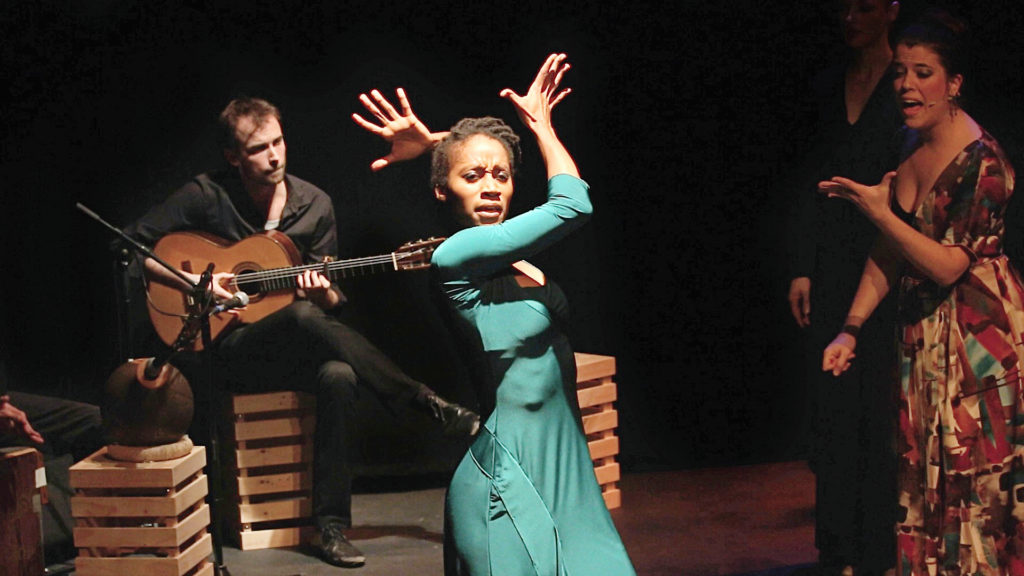
“As a Londoner and a woman of African and Caribbean descent, my relationship with flamenco has always been complex. I am nevertheless eternally thankful for everything this dance has awoken in my body. It has been the pursuit of this distant familiarity that I have always felt when dancing flamenco that brought me to live in the south of Spain.”
Yinka Esi Graves
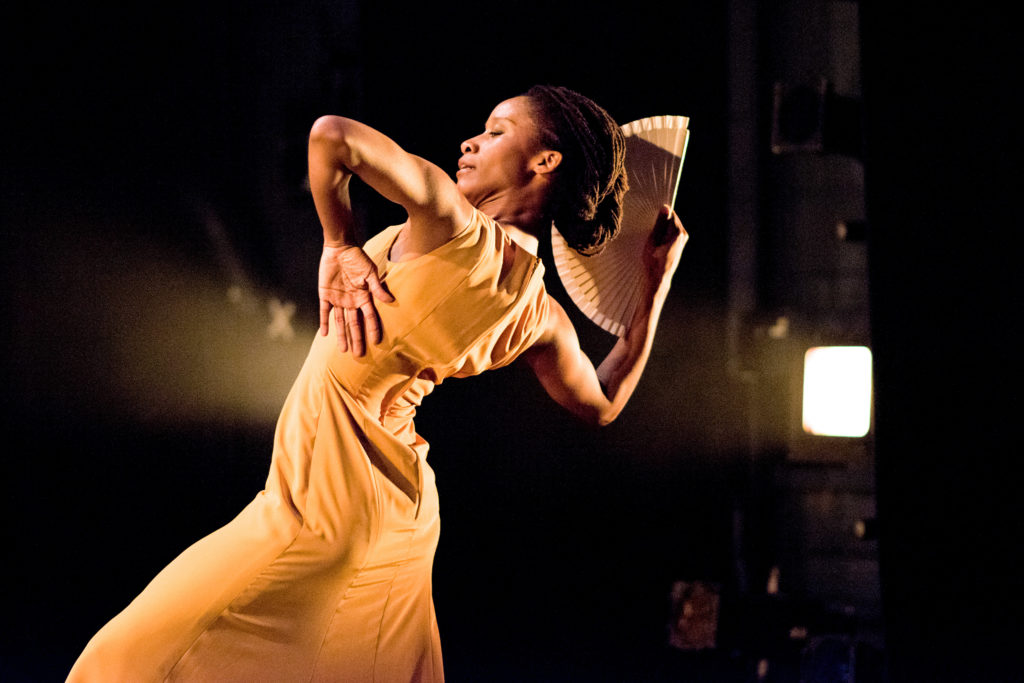
Aliesha Bryan
Aliesha Bryan’s path to flamenco began fortuitously while she was a French/English/Spanish translator for the 2009 UNESCO World Heritage Committee in Seville. The convocation’s gala featured an authentic flamenco performance in a traditionally intimate, improvised setting. Bryan was enthralled to see a voluptuous woman, empowered and self-possessed, dancing and singing. “The fullness of her figure was satisfying and affirming,” declares Bryan, “and I understood that, in flamenco, all bodies are accepted, as well as emotions” beyond the standards of behavior and presentation she was taught in conventional dance training. Born in Brooklyn, New York, to Jamaican parents, she has studied ballet, modern/contemporary, continental and diasporic African genres, as well as Pilates and somatic practices, like Gyrokinesis. With an MS in dance/movement therapy from Sarah Lawrence College, she fuses her movement knowledges with her primary calling as a flamenco artist. Bryan adopted Pájaro Negro—”blackbird”—as her professional name.
“Flamenco allowed me to pierce through the armor of shame that Western society dressed me in. I saw that emotion was accepted, that the sheer force of whatever I was feeling could drive my movements. I use my body as interrupter to those who wouldn’t expect or trust my capability. I can commune with others at our most stripped-down and bare human selves if I allow myself to get lost in the rhythm. With flamenco, I discovered my humanity.”
Aliesha Bryan
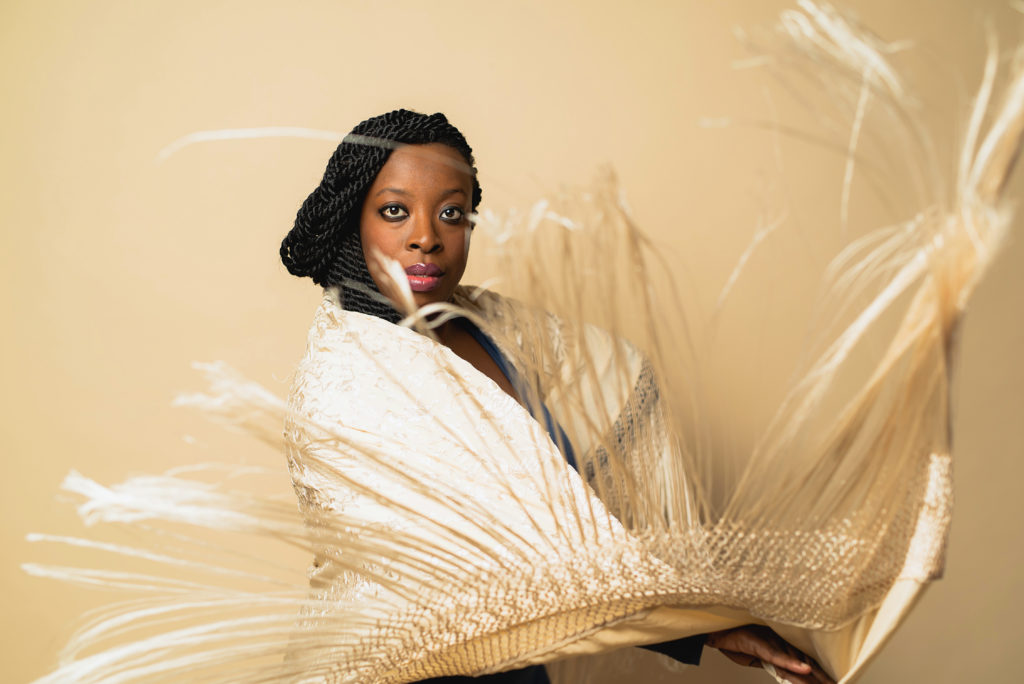
There is gravitas combined with a joyful delight as these women recount their “coming-of-age” stories, having embraced flamenco in their 20s and now pursuing it for 10 to 15 years running. Following in the master–apprentice relationship that applies across flamenco studies, they cite specific teachers and cities—Seville, Madrid, Granada—as key to their loving, learning and adopting the form. Adept in dancing traditional flamenco styles—soleares, siguiriyas, bulerias, alegrias—each of them has branched out to improvise and choreograph, collaborating with other dancers, singers and musicians (generally guitar and percussion) in the communal aura that is an essential ingredient in flamenco.
Moving in unique trajectories inspired by the spirit of tradition and innovation, these exceptional artists represent a growing international community of Black dancers staking a claim in the land of flamenco. Experienced in the genre and unswerving in personal commitment, they extend, enliven and enrich flamenco’s flavors and futures. They deserve a hearty Olé!
